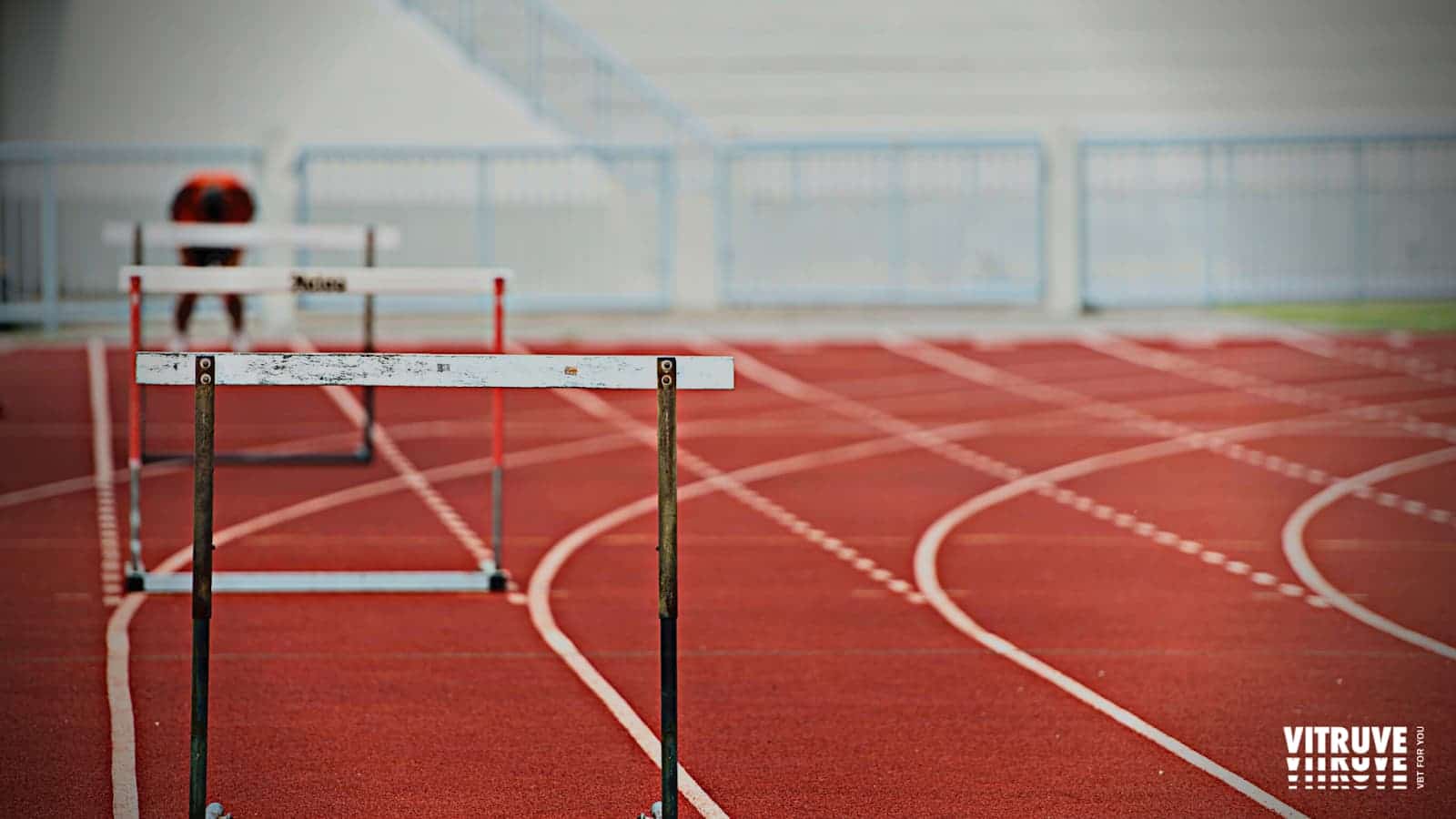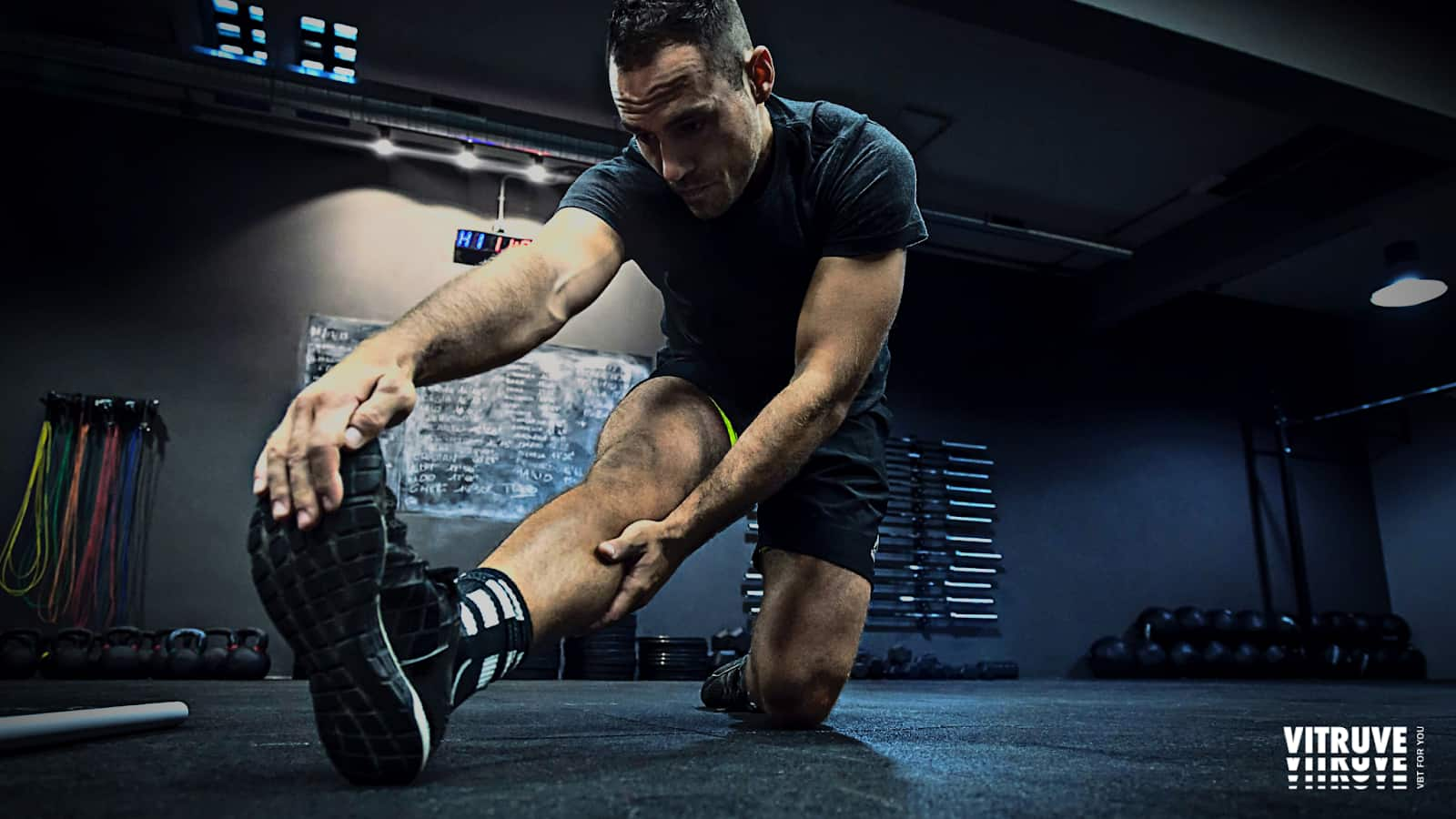15 de July de 2022
The 110m Hurdles: Technique, Drills, and Training
110m hurdles race is not like any other sprint on a track. Not only do you have to maintain your full speed on the track, but you also need to clear ten 42” hurdles while doing the best you can to reach the finish line before other opponents. So, it is not just about speed; it also involves technique and rhythm.
Training for this race involves careful measurements during workouts and drills. For this reason, athletes and their coaches must be really good at identifying several metrics related to training and formulating robust training plans.
The Right 110m Hurdles Technique
To ensure success in a 110m hurdles race, you must keep your hips high – ideally at the level of the hurdle – and maintain a forward lean position. And most importantly, you must run as fast as you can. It wouldn’t be more wrong if you find yourself thinking about what to do when running on the track during the actual event. This is actually when you get into every tiny bit of detail of the event, and it can be a real recipe for failure. The right time to think of your 110m hurdles technique is during training.
When training for 110m hurdles, ensure to train your lead leg. The role of the lead leg starts even before the gun goes off. For the race that involves an 8-step approach, make sure that your lead leg is in the back block before you set off.
The lead leg comes into action with a high knee right before you clear a hurdle. At this point, ensure that your foot is dosri flexed – toe toward your knee. The body area this action comes from is the hip flexor (groin and quads). When driving your leg into the hurdle, ensure that your foot stays behind the knee. The foot on the front with a locked knee would cause a jumping effect, causing delayed landing and speed loss.
When clearing a hurdle, the lead knee should move forward slightly flexed. This helps with a faster cut down and quicker landing. Make sure that your leg is first lifted and then extended, or you might end up landing with a poor balance. When lifting the lead leg, ensure to extend your lead arm forward. The lead arm should be above the body’s midline as doing the opposite will twist your upper body, causing a loss of balance.
The descent phase begins when your leg passes over the hurdle and starts moving downward. At this point, the muscles supporting your movement are the hamstring and calves. This phase of the jump typically involves the trail leg coming forward and the lead arm moving backward. Moreover, your arms must swing wider than the legs to keep the body balance intact.
When landing, make sure that your foot lands in front of the body. And your body must remain tall upon landing, which requires adequate ankle strength.

Hurdle Drills for Athletes
You can work on multiple techniques or drills to enhance your physical and mechanical capabilities when practicing for a hurdles race. Here are the three drills to help you prepare for a hurdles race.
The 1-Step Drill
This drill involves setting up at least three hurdles 6-10 feet apart and moving through them with the 1-step approach. The proper mechanics of this drill involve the following steps:
- Leaning forward
- Dorsi flex
- Driving the heal straight up the hips
- Finishing the hurdle when moving over the hurdle
- Moving the forward leg back onto the track
When practicing this drill, you want to instantly bounce over all the hurdles. You also want to keep your heels glued to your hip and feel the hip over the hurdles. This will require a lot of practice, but you will eventually acquire your desired sensation.
Schery Tops
This drill involves moving down the track with a straight leg approach and acquiring the sensation of a proper cut step.
The cut step is a vital part of this drill as it dictates the parabolic flight and overall velocity when you move over a hurdle. To perform this step properly, you must make sure that your hips are not dropped at the time of takeoff.
Moreover, you must maintain a momentum that allows you to cross the hurdles without any extra effort. Here are the steps involved in a Schery Tops drill.
- Go with the locked knees.
- Swing your arms naturally.
- Raise your heels to the hip level while keeping your feet dorsi flexed.
- Keep your knees locked throughout the drill.
Cycle Ladder
Cyclic Ladder involves placing the hurdles at increasing distances of two feet per hurdle. This drill is ideal for beginners who want to build their confidence to perform a hurdles race. Coaches generally set hurdles spaced 11, 13, 15, 17, 19, 21, 23 feet apart. This spacing is designed to encourage faster foot movement between the hurdles.
- Prepare for a quicker foot movement on the ground when in the mid-flight.
- Stay forward through the track.
- Move your trail leg in such a way that it feels like touching the ground at the same time when the lead leg lands after a hurdle.
- Maintain your rhythm throughout the track.
- Keep the stride length the same.

How to Get Faster With the Hurdles
The lead leg is undeniably a crucial factor in generating speed when crossing hurdles. However, many athletes and coaches tend to overlook the trail leg and lead arm. Indeed, these two factors primarily help maintain the rhythm and balance, but they also play a significant role in generating an immense amount of speed. Let’s explain both these factors as keys to gaining pace.
The Trail Leg
Using the trail leg correctly can help increase speed when an athlete takes off into the hurdle. This is usually when the trail leg’s knee is still in the forward position. At this time, ensure that the trail leg’s motion is not wide, or you will end up losing speed.
The trail leg knee moves upward when you come off the hurdle. The quad of the trail leg becomes parallel to the track when the lead leg’s foot touches the ground. The trail leg’s foot must touch the ground immediately after the lead leg for a quick resumption of the sprint.
Placing the lead leg onto the ground without driving up the trail leg will cause a twist in the hips and shoulders. This can cause your movement across the track more like left-to-right instead of up-and-down, leading to the loss of speed.
The Lead Arm
The lead arm has a quite significant role in generating speed when moving through hurdles. The number one rule to keep in mind regarding the lead arm is that it should never stop moving throughout the race. This is because any pause in the movement of the lead arm will cause the legs to pause too. When sprinting, ensure that your lead arm moves up and down. There must not be any side-to-side movement of the lead arm, or there will be balance issues that can slow you down.

Building Strength for Hurdles
When training for hurdles, you want to add as much explosiveness to your performance as possible. And for that, you must have adequate body strength and power. One of the best ways to build and enhance your physical ability for hurdles is resistance training. You can incorporate different resistance training exercises into your training regimen in this regard, such as:
- Olympic lifts
- Core strengthening
- Hip flexors
- Weight hurdling and running
You can make your resistance training even more explosive with VBT – also known as velocity-based training. It is a variable tool used by strength and conditioning coaches around the globe to monitor and adjust athletes’ performance for different objectives.
Velocity Based Training can be used to modify resistance training exercises for hurdles. The most appropriate workout in this regard is Olympic Lifts, which involves lifting loaded barbells. Using VBT, a coach connects a VBT device, usually a linear position transducer, with the barbell. Any movement in the barbell is sensed by the device, which then shows its metrics on a smartphone or tablet through AI-based software.
One of the devices to use in this regard is Vitruve, a high-quality linear encoder that helps athletes and their coaches measure velocity, acceleration, and power.
Conclusion
110m Hurdles is a tougher form of sprinting that requires rigorous training and the perfect 110m hurdles technique. Therefore, coaches must work exceptionally well to help their athletes acquire the top form required for running through hurdles without losing speed. The above guide tends to be a definitive solution in this regard.

